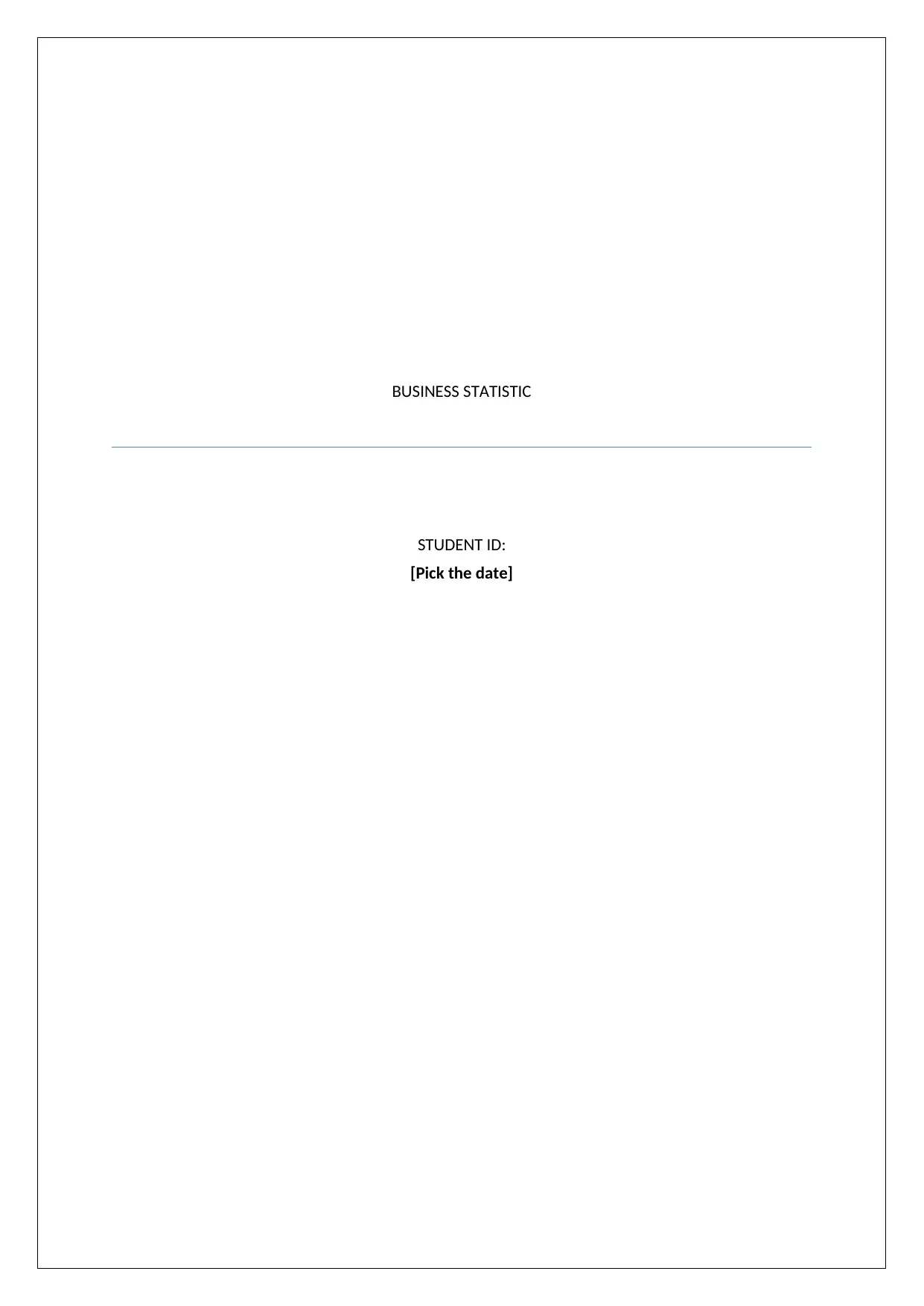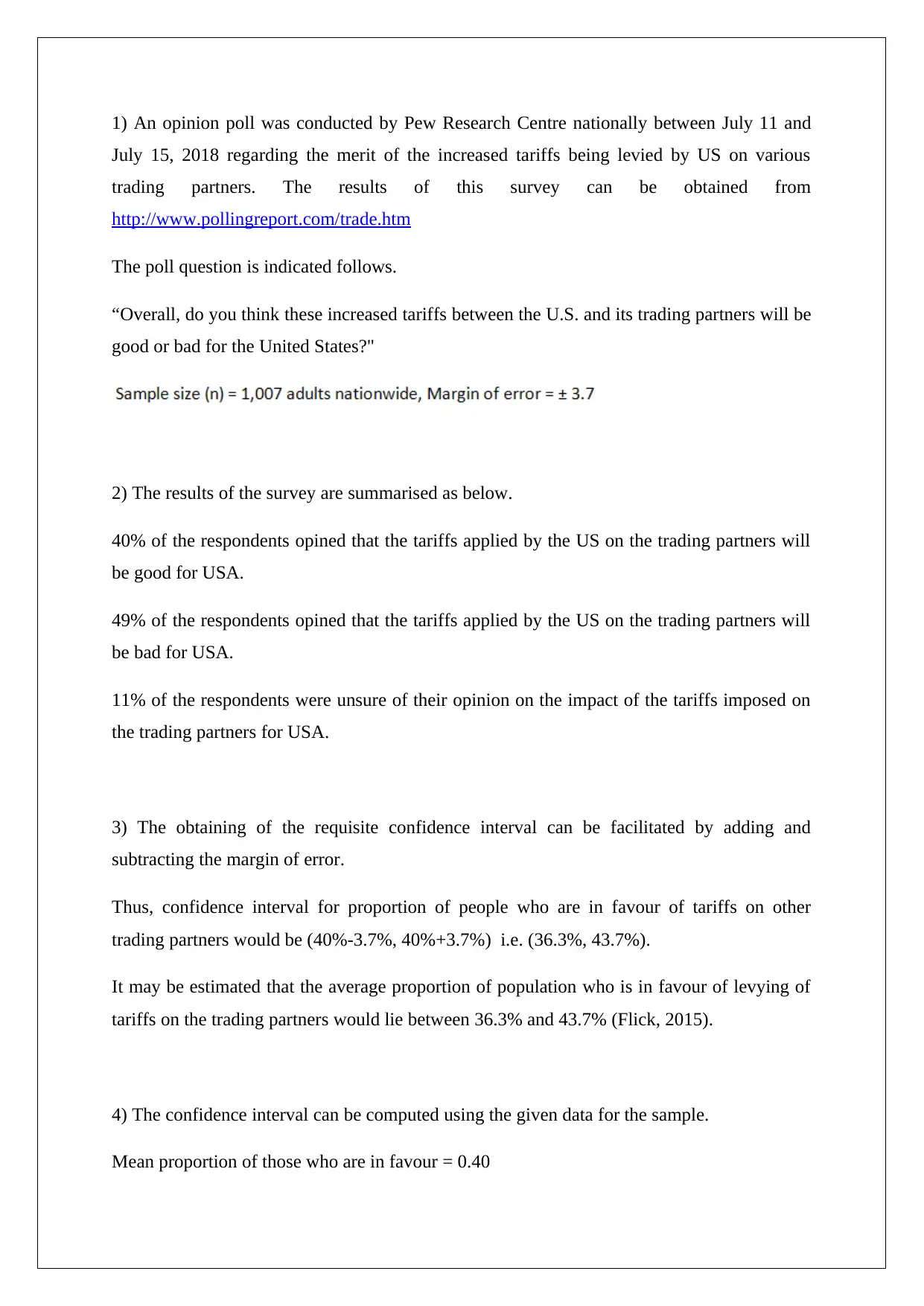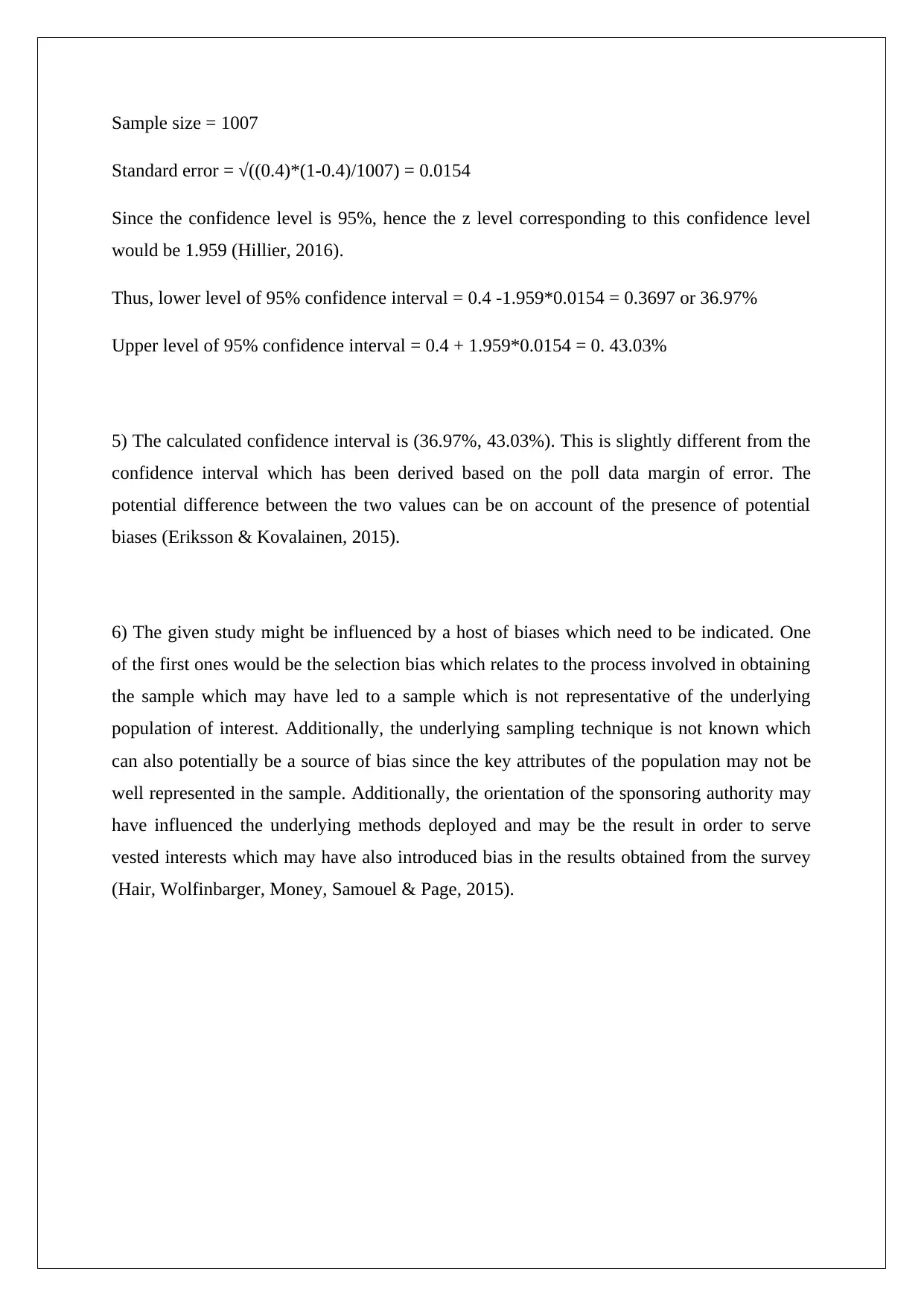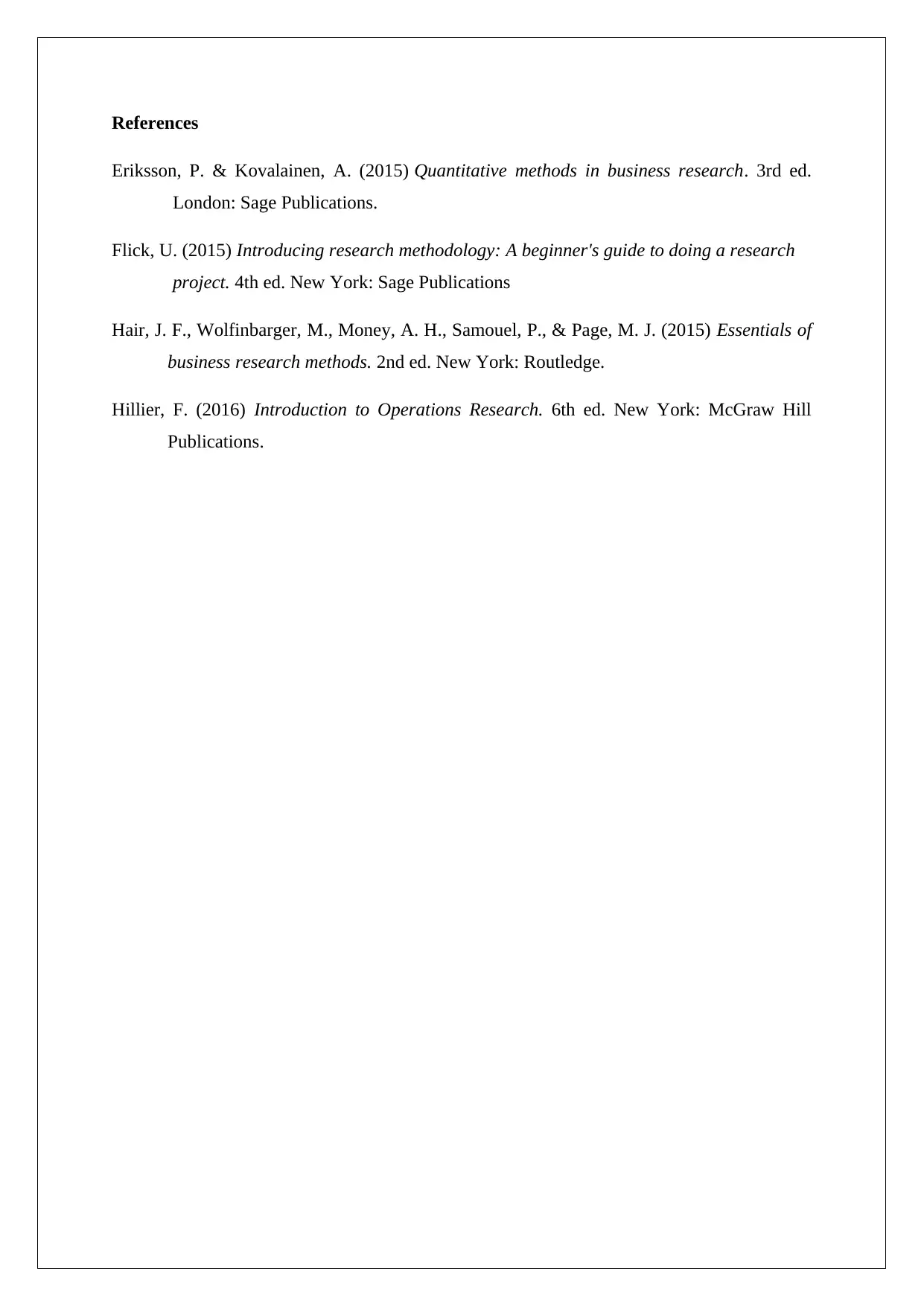Business Statistics Assignment: Confidence Interval Analysis and Bias
VerifiedAdded on 2021/09/23
|4
|699
|137
Homework Assignment
AI Summary
This business statistics assignment analyzes an opinion poll conducted by the Pew Research Centre regarding US tariffs. The solution calculates a 95% confidence interval for the proportion of respondents in favor of the tariffs, using the provided survey data, sample size, and standard error. The assignment compares the calculated confidence interval with one derived from the poll's margin of error, highlighting potential differences and discussing potential biases, such as selection bias and biases introduced by the sponsoring authority's orientation. The assignment provides references to relevant statistical methods in business research, emphasizing the importance of understanding and addressing biases in data analysis and interpretation. This comprehensive analysis helps students grasp the practical application of confidence intervals and the critical evaluation of survey results.
1 out of 4





![[object Object]](/_next/static/media/star-bottom.7253800d.svg)